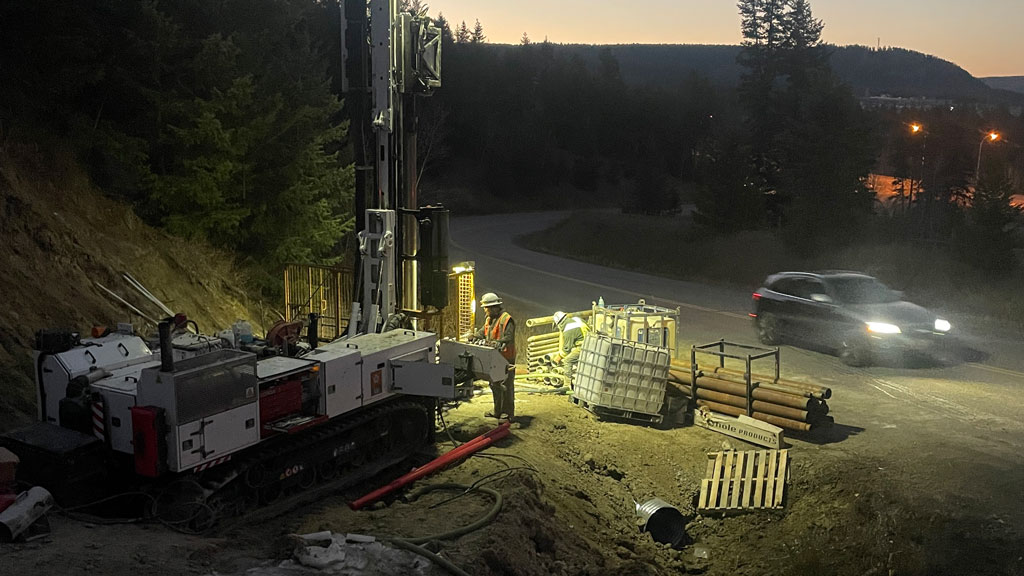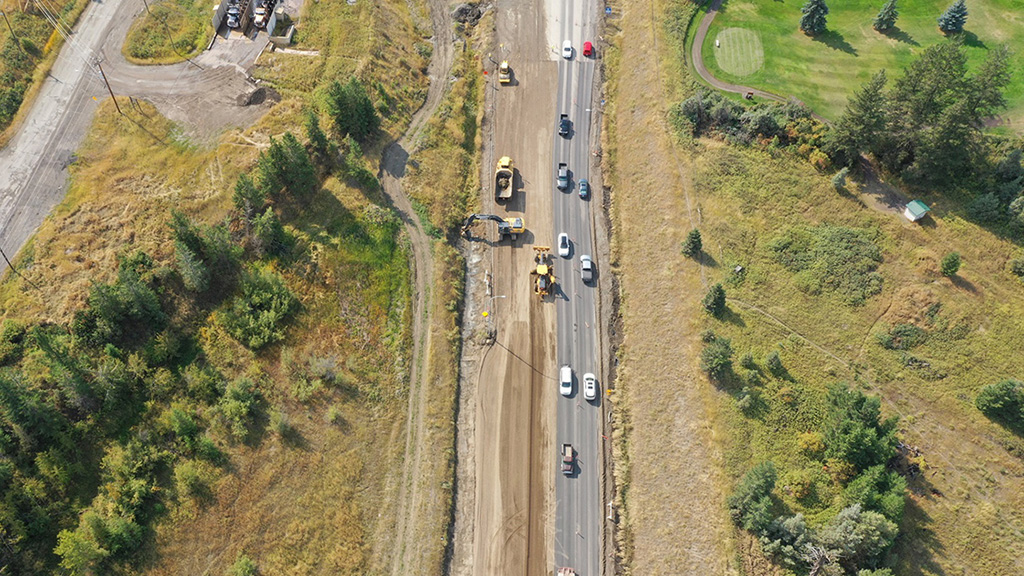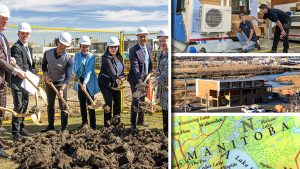Construction crews have brought in rigs to do geotechnical drilling along Highway 20 at Hodgson and Dog Creek roads southwest of Williams Lake, B.C., which is being affected by a slow-moving slide.
The project is one of 10 sites along the Highway 97 corridor in the Cariboo Region in the central interior of the province that has experienced significant landslides and road washouts in recent years.
Crews are drilling boreholes as deep as 74 metres and installing instrumentation to measure the characteristics of the slide.
The instruments will also monitor ground movement and water pressure.
Meanwhile, upgrades are being made to existing infrastructure and crews are clearing and widening ditches and installing a new culvert to move rain and snow melt from the upslope to downslope area.

“This slide is very deep, it’s 60 to 70 metres deep. It’s deep holes that they’re drilling and installing a number of instruments to measure the groundwater, and bore water pressures, to see if movement has occurred and really get a sense of where is the failure plane, how is it changing over time and how the groundwater is interacting with the slide,” explains John Babineau, deputy director of the Cariboo Road Recovery Projects at the B.C. Ministry of Transportation.
“We’ve learned you can’t have too much technical information. That level of investigation is a really important piece in making sure that when we deliver a solution, we’re confident it is the best solution. Our goal here is to slow down the slide and stop the slide if we can. That will have a benefit to not just highway infrastructure but to municipal infrastructure, private utilities and homes as well.”
Changing weather patterns have hit the Cariboo Region particularly hard in recent years and contributed to hundreds of landslides and road washouts in 2020 and 2021.

The province is restoring access where feasible and designing and building transportation infrastructure that will be more resilient.
Work on mitigation options at the Hodgson/Dog Creek slide has been ongoing since 2021. The risk to public safety is considered low and roadways are still open. That said, though, the fix is not easy.
“It’s a unique slide, it’s very large, it’s very deep-seeded and is one that is particularly challenging,” notes Babineau.
Information collected from past investigations and instrumentation in the bore holes will provide the project team with a good sense of what forces are driving the slide and what needs to be done.
“We know that surface water and groundwater are always problematic for landslides and managing that will always have a benefit to the slide, so we’ve undertaken ditching improvements, culvert improvements, moving standing water and surface water into public rights of way to get it into the ditches and get it down off the slide as efficiently as they can,” says Babineau.
The team plans to share options that will slow the slide next year. Options for the Hodgson slide include upgrades to existing drainage infrastructure.
On the Dog Creek slide, options include flattening the top of the slide, construction of a berm at the bottom to prevent movement, and placement of large rock in seepage areas. The slide has been deemed too big to stabilize mechanically.
Engineers figure individual mitigation measures will be needed for each of the 10 slide areas along the corridor.
“We see some slides that are on major routes and we’ve got some slides on very low-volume sideroads,” notes Babineau. “Some slides have been moving for a very long time but were certainly moving much more quickly in 2020 and 2021, and we have some that we’ve never known about before and have come out of nowhere and had a really big impact on infrastructure.
“Our approach on each of them, apart from using a thoughtful, technically based approach, is that all projects are on their own path.”
The first two projects along the Highway 97 corridor were approved for $538 million earlier and are expected to move to the construction phase next year.
At Cottonwood Hill, rock barriers have been installed to allow crews to begin stabilizing a slow-moving landslide and at Blackwater and Knickerbocker roads, a paved section is being realigned and reinforced. Other measures are also being undertaken, such as installing wells and pumping water out of the slide area.
Seven more projects along the corridor are moving through the design and funding approvals stage at the Ministry of Transportation and Infrastructure and will require equally significant investment.
“The level of investment would be based on the option that’s selected to move forward and the design and construction,” says Babineau. “We’re committed to spending in 2021 hundreds of millions to solve these problems. These have really substantial impacts and our goal is to try to solve these problems correctly.”
B.C. is susceptible to landslides because of the terrain, but recent higher rainfall in spring and summer have combined with snow melt in the Cariboo to accelerate the problem. Major wildfires have also damaged vegetation, making it less effective at absorbing moisture and holding soil together.
Persistent wet seasons in 2020 and 2021 triggered the problems, says Babineau.
“That really gave the groundwater a chance to saturate and come up into the slide and reactivate a number of slides.”











Recent Comments
comments for this post are closed